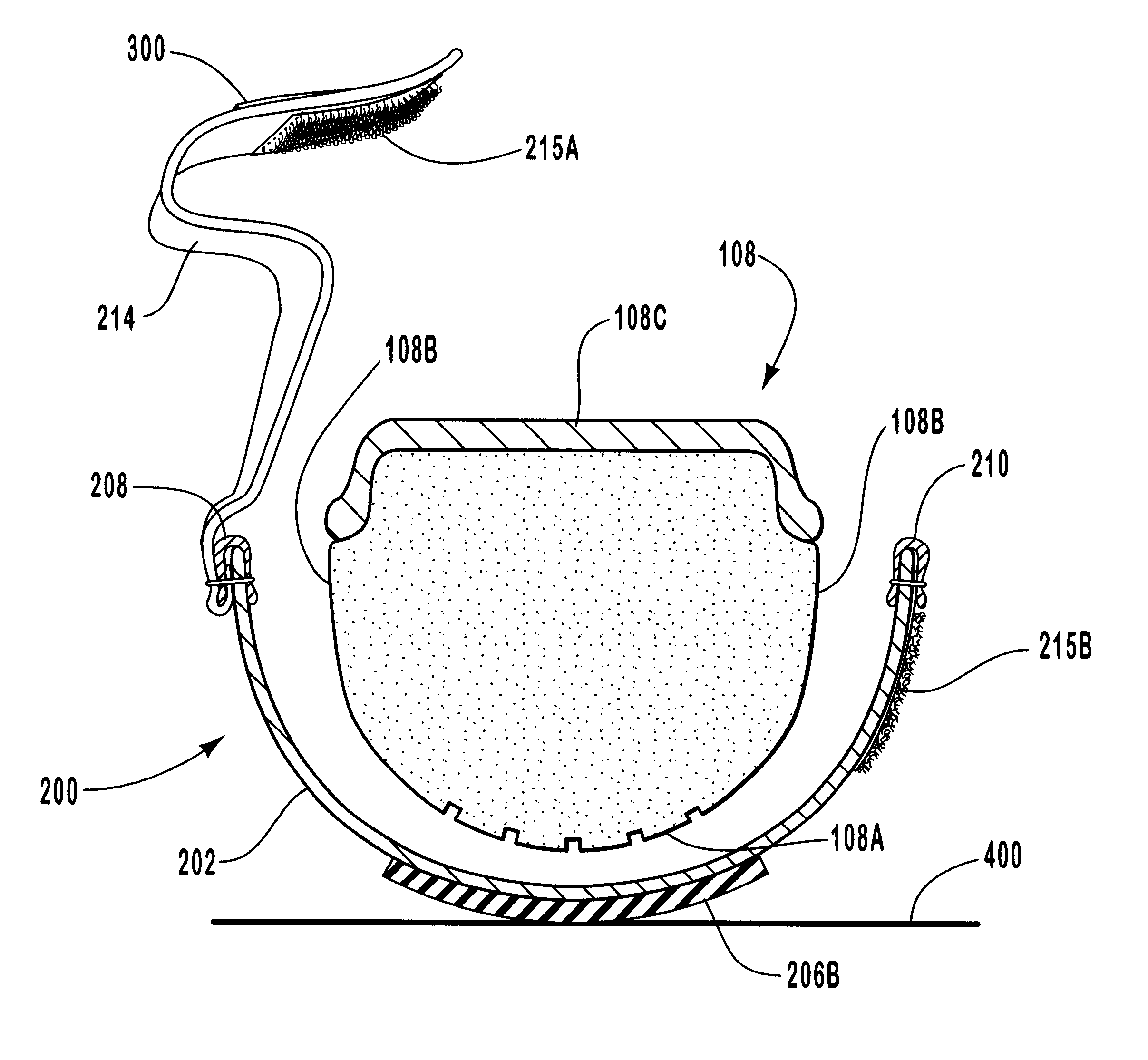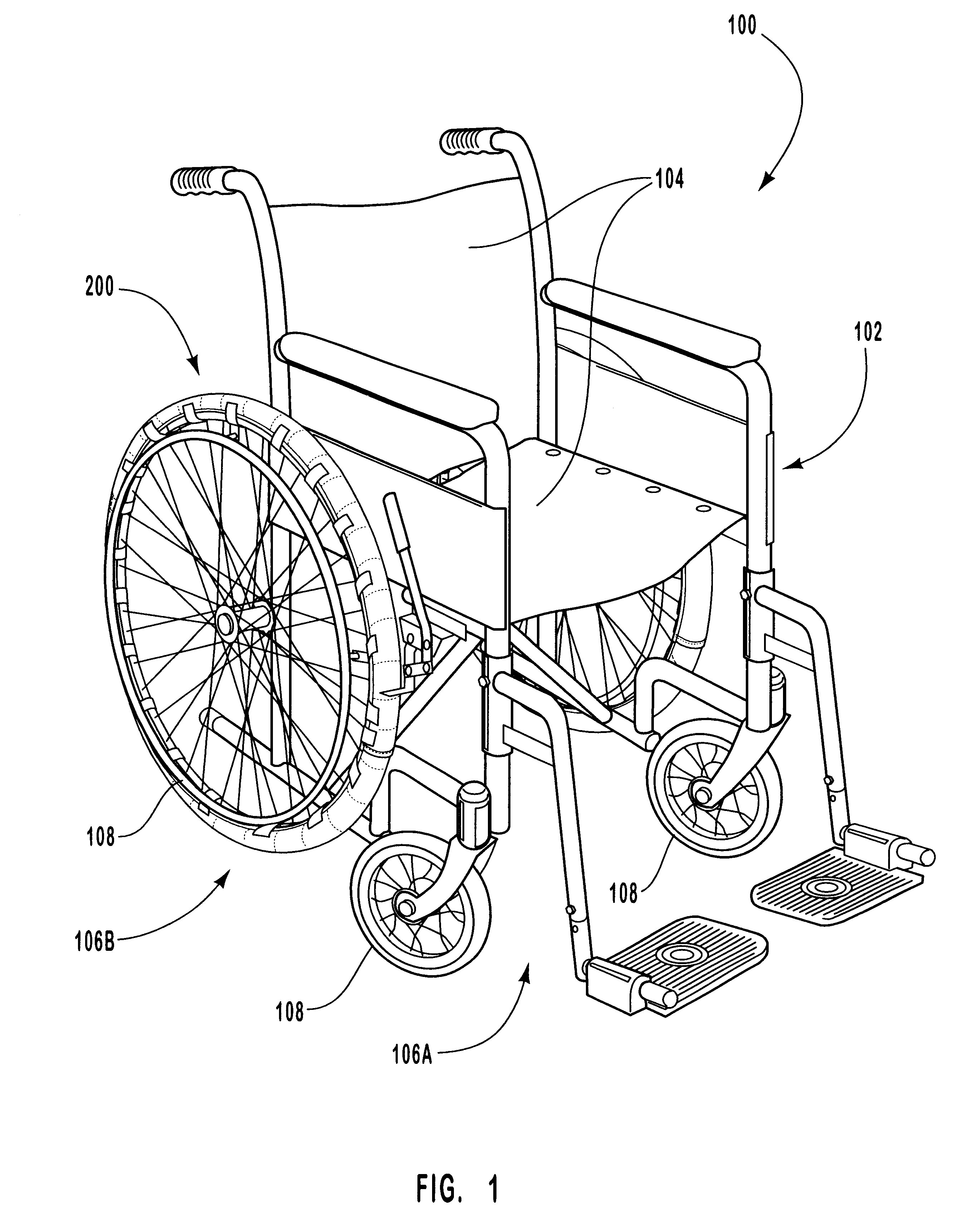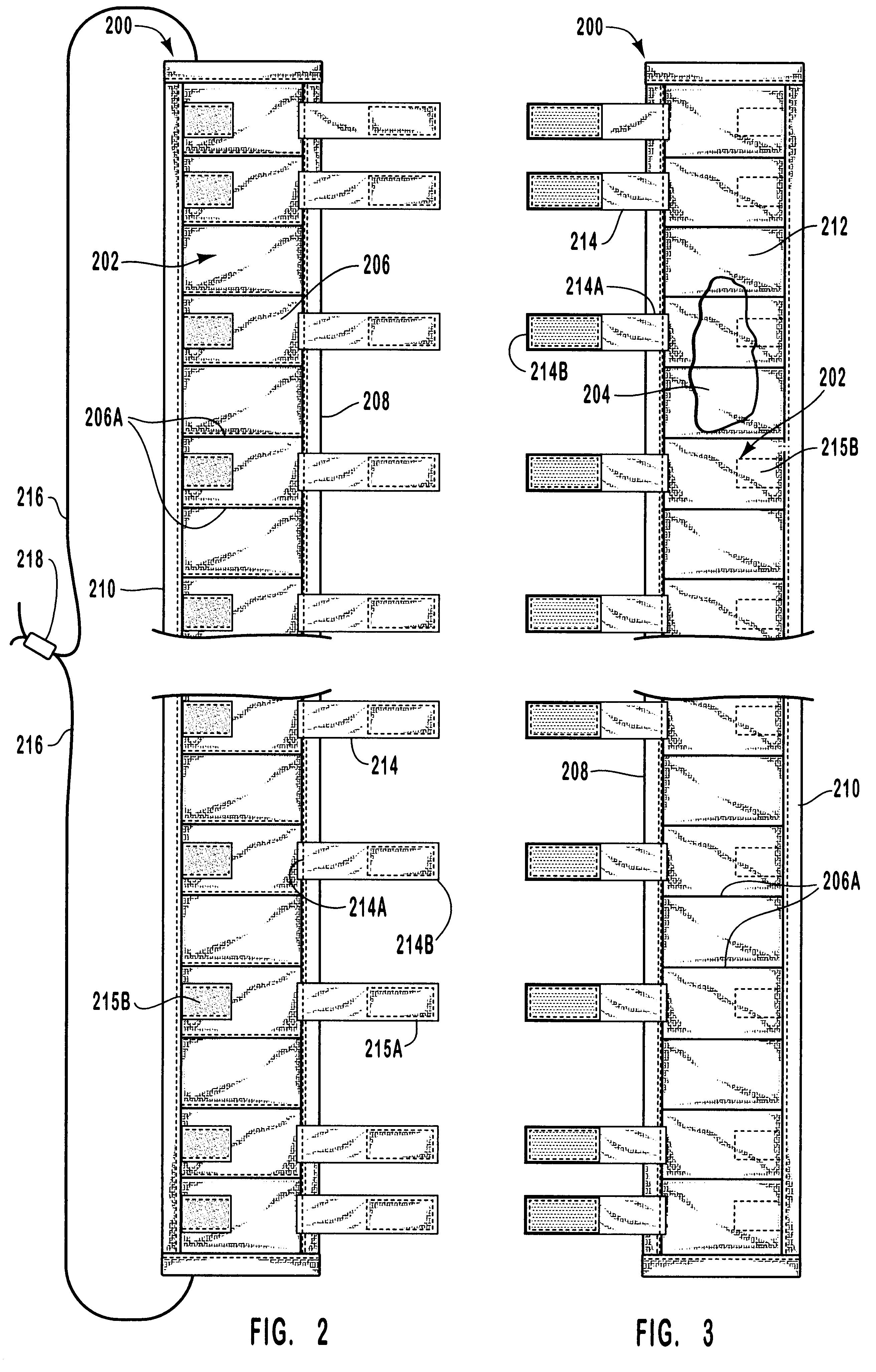Wheelchair wheel cover
a wheel chair and wheel cover technology, applied in the field of protective covers, can solve the problems of user frequent entry, unfavorable user encounters, and difficult to avoid, so as to reduce the incidence of infections and prevent injury to users
- Summary
- Abstract
- Description
- Claims
- Application Information
AI Technical Summary
Benefits of technology
Problems solved by technology
Method used
Image
Examples
Embodiment Construction
Reference will now be made to figures wherein like structures will be provided with like reference designations. It is to be understood that the drawings are diagrammatic and schematic representations of various embodiments of the invention, and are not to be construed as limiting the present invention, nor are the drawings necessarily drawn to scale.
Reference is first made to FIG. 1, wherein a wheelchair is indicated at 100. In general, wheelchair 100 includes a frame 102 to which is attached a seat 104 wherein a user resides when operating wheelchair 100. Additionally, a front wheel set 106A and a rear wheel set 106B, are provided which are likewise attached to frame 102. Wheelchair 100 may comprise a motorized wheelchair, or may alternatively comprise a wheelchair of the type that requires the user to manually rotate the rear set of wheels in order to propel and steer the wheelchair.
Note that while some embodiments of the invention are especially well suited for use in conjunctio...
PUM
 Login to View More
Login to View More Abstract
Description
Claims
Application Information
 Login to View More
Login to View More - R&D
- Intellectual Property
- Life Sciences
- Materials
- Tech Scout
- Unparalleled Data Quality
- Higher Quality Content
- 60% Fewer Hallucinations
Browse by: Latest US Patents, China's latest patents, Technical Efficacy Thesaurus, Application Domain, Technology Topic, Popular Technical Reports.
© 2025 PatSnap. All rights reserved.Legal|Privacy policy|Modern Slavery Act Transparency Statement|Sitemap|About US| Contact US: help@patsnap.com



